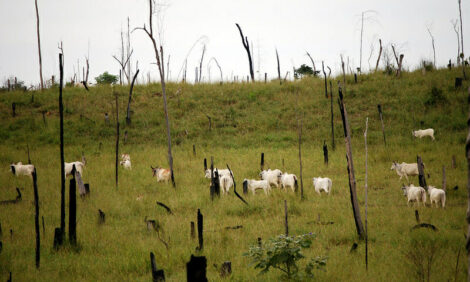



Global Food Prices Hold Steady
GLOBAL - Food prices remained virtually steady in April after falling in March following eight months of successive increases, FAO announced last week.However, while the FAO Food Price Index averaged 232 points in April, little changed from March, it was still 36 per cent above April 2010 and only two per cent below its peak in February 2011.
A fall in sugar prices and a decline in rice helped stabilize the index, but international prices of nearly all other food commodities remained firm.
"A sliding dollar and increased oil prices are contributing to high food commodity prices, particularly grains," said David Hallam Director of FAO's Trade and Market Division. "With demand continuing strong, prospects for a return to more normal prices hinge largely on how much production will increase in 2011 and how much grain reserves are replenished in the new season."
Wheat and maize prices rise
There was little change in the index because although international grain prices increased sharply in April, the rise was more than offset by declines in dairy, sugar, and rice, while oils and meat prices were mostly unchanged.
The FAO Cereal Price Index averaged 265 points, up 5.5 per cent from March and 71 per cent from April 2010. Maize prices rose 11 per cent and wheat increased four per cent in April 2011 as a result of unfavourable weather and planting delays. But large export supplies kept rice prices under downward pressure.
The FAO Oils/Fats Price Index, which had fallen by seven per cent in March, was nearly unchanged in April.
The FAO Sugar Price Index averaged nearly 348 points, down seven per cent from March and 17 per cent below its January record.
The FAO Dairy Price Index averaged 229 points, down 2.4 per cent from March. A good start of the northern hemisphere season has kept prices from rising after seven months of steady growth.
The FAO Meat Price Index, although at a record level, remained stable as compared to a revised estimate of 172 points in March.
Cereal market to remain tight
Latest indications point to a recovery in world cereal production in 2011 in response to high prices providing more normal weather conditions prevail. World wheat production is expected to increase by 3.5 per cent and rice by three per cent.
But world cereal stocks for the crop seasons ending in 2011 are forecast to decline to their lowest level since 2008, mostly due to depleting coarse grain inventories. Global wheat inventories are forecast to decrease too, but the wheat stock-to-use ratio will remain relatively comfortable, while rice inventories are even expected to rise.
"Although the early outlook for cereal production in 2011 is good, weather in the coming months will be critical," said FAO grain analyst Abdolreza Abbassian. "Production prospects for 2010 were extremely favourable at this time last year but unfavourable weather conditions between July and October changed that outlook drastically.
"Among all the cereals, maize is the most worrisome," Mr Abbassian noted. "This year we would need above-average, if not record, yields in the United States for the maize situation to improve but maize plantings so far have been delayed considerably due to cool and wet conditions on the ground."
TheCattleSite News Desk


